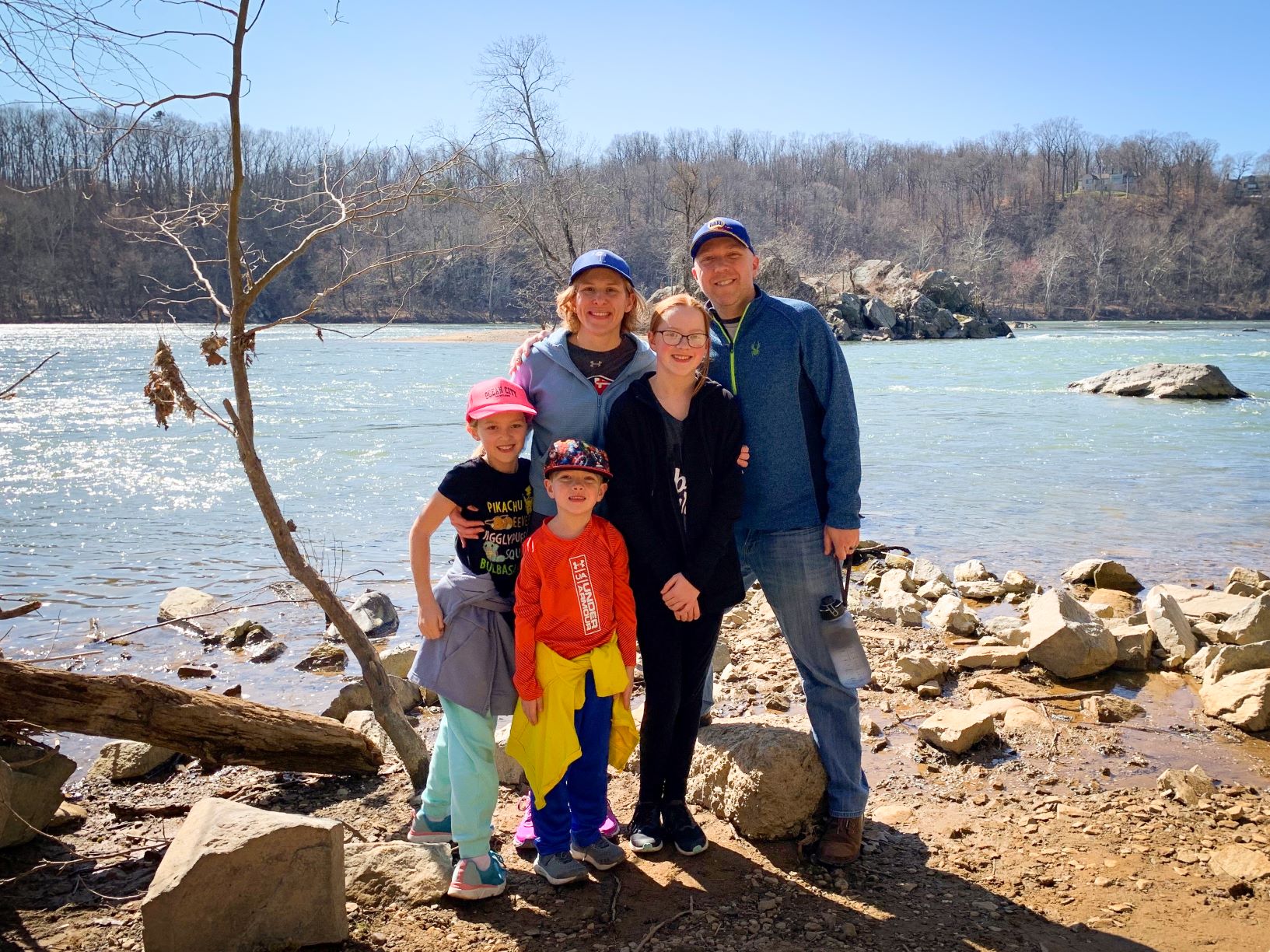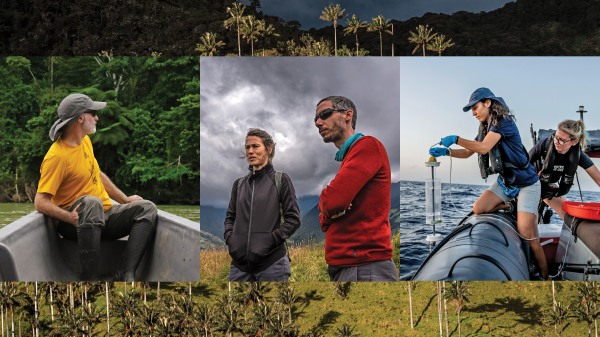After a 20-year journey, U.S. Air Force airman finishes quest to become a college graduate

Master Sgt. Ryan Gleason. Photo courtesy of Ryan Gleason.
Ryan Gleason was 10 years old when he solidified his love for maps.
As a fourth-grader in Ames, Iowa, Gleason pored over worksheets and textbooks and won his school’s geography bee, beating kids two grades his senior. For his efforts, he won a National Geographic board game.
“I think at that point it really reinforced my love for geography and maps,” Gleason remembered on a recent call from his home in Rockville, Maryland. “When I realized that I really needed to buckle down and choose a major, I found the whole world of geographic information systems. I didn’t realize I could have a career in something I really enjoyed.”
Now 38, Gleason — a husband, a father of three and an active-duty U.S. Air Force airman — is one of nearly 100 students who earned their bachelor’s degree this past May from Arizona State University's School of Geographical Sciences and Urban Planning through ASU Online.
But every student’s journey toward graduation is uniquely theirs. For Master Sgt. Gleason, earning his diploma was the conclusion of a two-decade-long collegiate journey, one characterized by adversity, persistence and the belief in himself that one day he would finish what he started.
“I just wasn’t ready”
In fall 2004, Gleason ran out of options. Four and a half years into college at Iowa State University, he was on academic probation with a GPA of 1.9, had less than two-thirds of the academic credits he needed to graduate, and denied withdrawing additional student loans.
At 22, he dropped out of school, moved into his parents’ basement and got a job delivering pizzas. The consequences of his actions weighed on him.
“I just wasn’t ready,” Gleason recalled. “I didn't make a lot of good choices when I went to Iowa State right after high school. I was failing classes, having to repeat classes, just being generally irresponsible, that really sums up my first attempt at an undergraduate degree.”
The next defining moment in his life came the following spring. Gleason, on a whim, enlisted into the U.S. Air Force. Thrown into a new environment marked by structure, discipline and integrity, he thrived.
“It’s really what turned my life around,” Gleason said. “The Air Force really took me in and made me feel like it was the place to be. I didn't have a whole lot of options, but I saw that they could pay for education and that to me was a way for me to try to redeem myself when and if I decided to go back to school.”
Part of something bigger
As the years passed, Gleason never forgot about college. While completing his duties with the Air Force full time, he continued to take classes, enrolling himself in several online institutions, chipping away at the units and requirements needed to earn his degree. But nothing stuck.
“I took maybe nine credits here and 12 credits there but nothing really stuck and part of it was because I never really felt like I was part of something,” Gleason said. “At those online institutions, as a student, I just felt like I was just another statistic or number.”
ASU’s online degree program opened up new opportunities for Gleason. Initially attracted to ASU for its relationship with active-duty military and veterans through the Pat Tillman Veterans Center, the quality of educational support and the financial assistance he received, Gleason enrolled in the online Bachelor of Science in geographic information science (GIS) degree program at ASU in 2018.
“I chose Arizona State because I really wanted to go to a school where I felt like I was part of a community, part of something bigger,” Gleason said. “Also, the instructors that teach the online programs are the same instructors and faculty that teach on campus and that was a big deal.”
Gleason says it's the relationships with his professors and the quality of the education that made the difference for him and make him proud to be a Sun Devil.
“Having the same resources (online) so that you can have a similar experience as being in-person was awesome. There were really cool online lectures with guest lecturers from other parts of the department that came in. You feel more connected to the program.”
Visualization of data

The Gleason family recently at Great Falls National Park. Photo courtesy of Ryan Gleason.
As part of his GIS coursework this past spring, Gleason completed an online capstone project in which he mapped and analyzed water quality data in the Chesapeake Bay to address complex environmental issues. As part of the course, Gleason had weekly one-on-one video chat conversations with Drew Trgovac, lecturer in the School of Geographical Sciences and Urban Planning, where he was able to navigate the complexities of the project and get direct feedback from faculty.
“Having those weekly conversations with Dr. Trgovac, having the encouragement from him, his guidance and mentorship throughout the whole process really were invaluable for me,” Gleason said. “That probably is the biggest takeaway from going through this program.”
Trgovac recognizes Gleason's commitment to his studies and his passion for the field of GIS.
“Ryan was always going one more above what you would think of a typical student, he was always willing to go on and tinker ahead,” Trgovac said. “He is really good at problem-solving.”
“It's always easier to do something simpler, but he would challenge himself and problem-solve everything he needed and he’s better for having done that, too, because when you run into some kind of difficulty, well, do you give up or do you keep going?”
Through the challenging times, Gleason says he was inspired by his wife who, following the births and raising of their three children, went back to school to earn her master's degree and her PhD in public health. She now is a postdoctoral researcher for the National Institute of Health.
“Having such drive and dedication in my best friend, my role model, who gave me the incredible motivation and set the example for me, and also she's there to help continue to motivate me every step of the way, having her was key to all of this, and obviously it means a ton to me,” Gleason said.
There’s always time
Following graduation, Gleason looks forward to continuing to dedicate the next four and a half years to his service to the Air Force before retiring from the military. After that, he aspires to take on new challenges and begin a career as a GIS analyst or pursue attaining a master’s degree.
“I'm going to retire when I'm 42 or 43, so I still have a bunch of time ahead of me. I have not completely ruled out a master's program. I really had such a positive experience at Arizona State pursuing my bachelor’s that it left me ready for more again.”
For those on their own journeys who may be down on their luck or doubting themselves, Gleason has one piece of advice: “There is always time.”
“If you tell yourself it's too late, then you'll never achieve anything. You'll never get started. You'll never finish. You can't let yourself get into that mindset and you really just have to continue to look ahead no matter what,” he said.
“If you’re thinking to yourself ‘Man, I’m too old’, hey, I'm closing in on 40 and here I am now with a bachelor's degree. If I can do it, you can too.”
More Environment and sustainability

Greater Los Angeles wildfires impacted by meteorological misfortune
Editor's note: This is a quickly changing situation. The information in this article was accurate as of time of publication.Los…

A water fix that takes on the yuck factor
Written by Christy Spackman, an ASU assistant professor and senior global futures scientist. This essay is adapted with…

At home in the wild
By Kristin ToussaintEditor's note: This story is featured in the winter 2025 issue of ASU Thrive.Way up in the Andes mountains in…